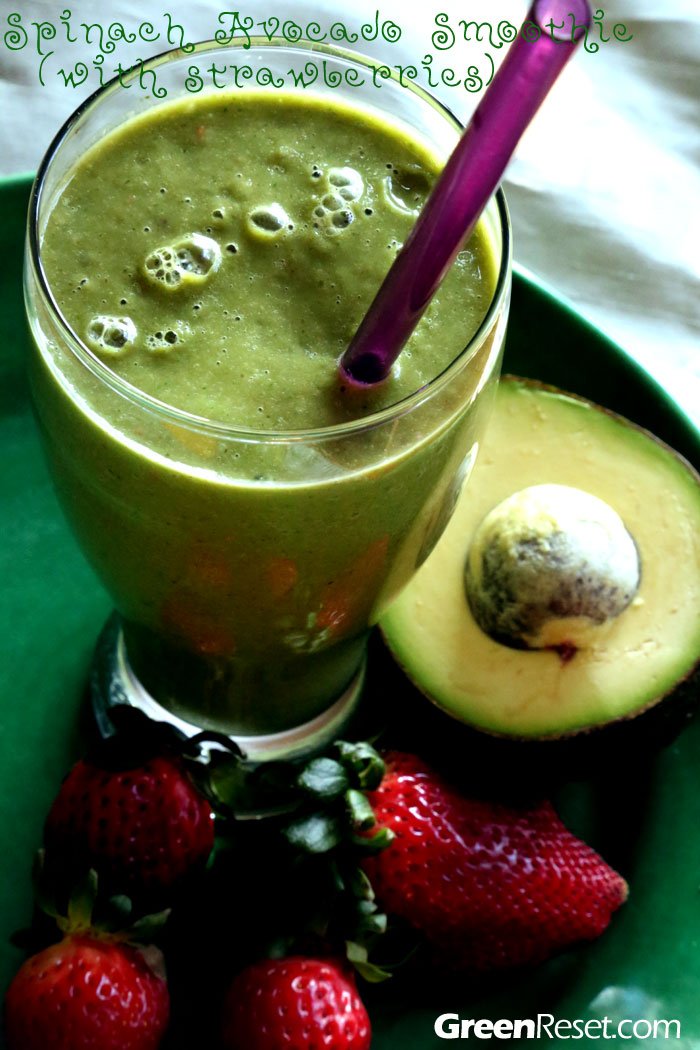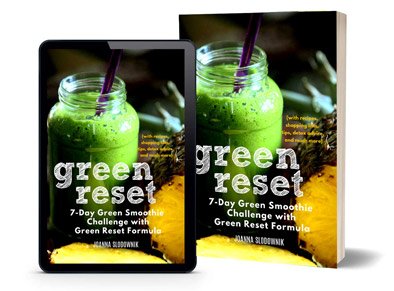Question: “Joanna, It has been 2 weeks since I have been on the green smoothie diet and feeling good, but being vegetarian I am worried about the protein intake. Do you have any ideas what I should add for protein and how much is good to reduce weight. Thanks”
This question often comes up in the context of plant-strong diet – as so many people are concerned about getting enough protein from plant foods, while also wanting to lose weight.
How much protein do you need?
We only need about 10% of calories coming from protein.
That’s it. Some experts recommend even less than that.
Meanwhile, an average person on a Standard American Diet consumes more like 20% of calories from protein (mostly coming from animals), which is a recipe for a disaster – such as kidney failure, kidney stones, heart diseases, diabetes, cancer, and other.
To calculate the amount of protein that you need, you may use this formula: (the amount of calories you need per day x 0.10)/4 = grams of protein per day.
Example:
For a 140lb female, calorie intake=1800 calories, protein=10%:
1800 x .10 = 180 calories from protein. Since 1 gram of protein = 4 calories, divide protein calories by four:
180/4 = 45 grams of protein per day.
Most people need only about 40-60 grams of protein per day.
Top food sources of healthy protein
Americans seem to be in constant search for protein sources.
What I feel is important to understand is that when you are eating enough calories from a variety of plant sources, such as leafy greens, vegetables, legumes, mushrooms, nuts, seeds, and whole grains, you will be supplying your body with sufficient protein to stay healthy.
Below I list some of the best sources of protein – I mean really, truly lean, mean, cholesterol-free (zero!), fiber- rich, antioxidant-rich, disease-busting, health promoting protein.
Again, what I want to stress is that you don’t need to spend your day with a calculator worrying about getting enough protein into your body. If you are eating a variety of these foods, you will be getting enough.
Keep in mind that all these foods are very low in calories, so in order to meet the caloric requirements, you can actually eat more of these foods, while staying healthy and slim.
1. Leafy greens and vegetables – the proper foundation for all diets. They provide the highest nutrient and protein amount per calorie.
1 cup raw spinach (7 calories) – 1 gram (57% calories from protein!)
1 cup raw kale (33 calories) – 2 grams (24% calories from protein)
1 cup raw broccoli (30 calories) – 3 grams (40% calories from protein)
1 cup cooked broccoli (52 calories) – 4 grams (30% calories from protein)
1 cup cooked spinach (41 calories) – 5 grams (49% calories from protein)
1 cup cooked sweet potato (180) – 5 grams (11% calories from protein)
2. Legumes, specifically lentils and beans, are a rich source of protein, while also high in fiber and zero cholesterol. They’ve constituted the foundation of many diets around the world for centuries.
1 cup soybeans – 28 grams (1 cup tofu – 22 grams, 1 cup tempeh – 30 grams)
1 cup lentils – 18 grams
1 cup boiled split peas – 16 grams
1 cup refried beans – 15.5 grams
1 cup chickpeas (garbanzo beans) and hummus – 15 grams
1 cup pinto, kidney, black beans – 13-15 grams
1 oz peanuts – 6.5 grams
3. Mushrooms
Mushrooms are a good source of protein. Since they are very low in calories, they are some of the highest sources of protein per calorie.
1 cup white mushrooms, stir-fried (28 calories) – 4 grams (57%)
1 cup portabella, grilled (42 calories) – 5 grams (48% calories from protein)
1 cup oyster mushroom (37 calories) – 3 grams (32% calories from protein)
1 cup shitake, stir-fried (43 calories) – 3 grams (28% calories from protein)
4. Nuts and seeds provide proteins too, but should be eaten in moderation if you are trying to lose weight, as they are quite high in calories and fat.
1 ounce cashews – 4.4 grams
1 ounce sesame seeds 6.5 grams, 3 tablespoons of tahini – 8 grams
1/4 cup (2 oz.) walnuts – 5 grams
1 oz. pistachios – 5.8 grams
2 tbsp almonds – 4 grams
Nut butters – peanut butter, almond butter, cashew butter – 2 tablespoons has about 8 grams of protein
5. Grains
Despite what Paleo diet proponents would like us to believe, people have been eating grains for millions of years – and there is more and more scientific research that proves that even in the Paleolithic era they had been using tools to process those grains into flour. Amaranth, bulgur, brown rice, wheat germ, oat bran and other grains are all good sources of protein. Even a bagel has protein, although it is high in calories too.
1 cup oatmeal – 11 grams
1 cup quinoa – 9 grams
1 bagel – 9 grams
Sprouted grain bread products – buns, tortillas, bread. 7-10 grams from the bread alone.
6. Non-dairy milk – Soy, almond, oat. 1 cup gets you 7-9 grams of protein.
7. Convenience foods and supplements: There are plant-based protein powders and bars to fill in the gaps on the go. Hemp – 30 grams of hemp powder in your smoothie gives you 11 grams of protein. Spirulina and chlorella provide rich nutrient content, and protein content.
8. Fruits. Generally, fruits are low in protein, with some exceptions, such as avocado. One large avocado will provide up to 5 grams of protein.


How to make your smoothies rich in protein?
Since fruits are low in protein, if you are concerned about protein, make sure you load up your smoothie with greens.
To further increase the protein content of your smoothie, add a handful of nuts or seeds, such as pumpkin or sunflower seeds. Adding ground nuts or seeds to your smoothie not only adds protein, but boosts the healthy fat content which makes a green smoothie more satisfying and keeps you full longer. Nuts and seeds are also mineral powerhouses and will make your smoothie not only high in vitamins and antioxidants, but also rich with minerals.
Try small amounts of raw nuts such as almonds, cashews, walnuts, Brazil nuts or macadamia nuts. Sunflower, pumpkin, sesame, hemp, flax and chia seeds are all excellent when ground up and added to smoothies. You can also add a tablespoon of raw nut butter, or substitute water with almond milk.
Other ingredients you may add is non-dairy milk, a cup of whole grains (such as oats or quinoa), or legumes (a chunk of tofu).
Just don’t overdo the fat content of your smoothie or else bloating, gas and digestion problems may result.
What to eat besides smoothies?
Prepare main dishes or sides using beans and legumes, mushrooms, vegetables and whole grains. Beans and legumes offer a flavorful, inexpensive, low-fat, healthy protein source.
Snack on nuts and seeds with foods like trail mix, sunflower seeds and shelled nuts. Nuts, seeds and nut butters provide protein in a form that makes a quick snack on-the-go. Don’t discount nuts and seeds as an added dose of protein in your main meals, though. Nuts and seeds make tasty additions to salads and Asian noodle dishes, for example.
Add soy to your favorite dishes. Soy contains as much complete protein as meat. Soy products like textured vegetable protein give the feel and flavor of meat to sauces, casseroles and stews. Tofu, often used in Asian cooking, works well in soups and stir-fries.
Questions? Comments? Suggestions?
If you have a favorite recipe, why not submit it here in the comment section of this smoothie recipes blog for others to enjoy too!
I also welcome any comments, questions and suggestions. Thanks!

